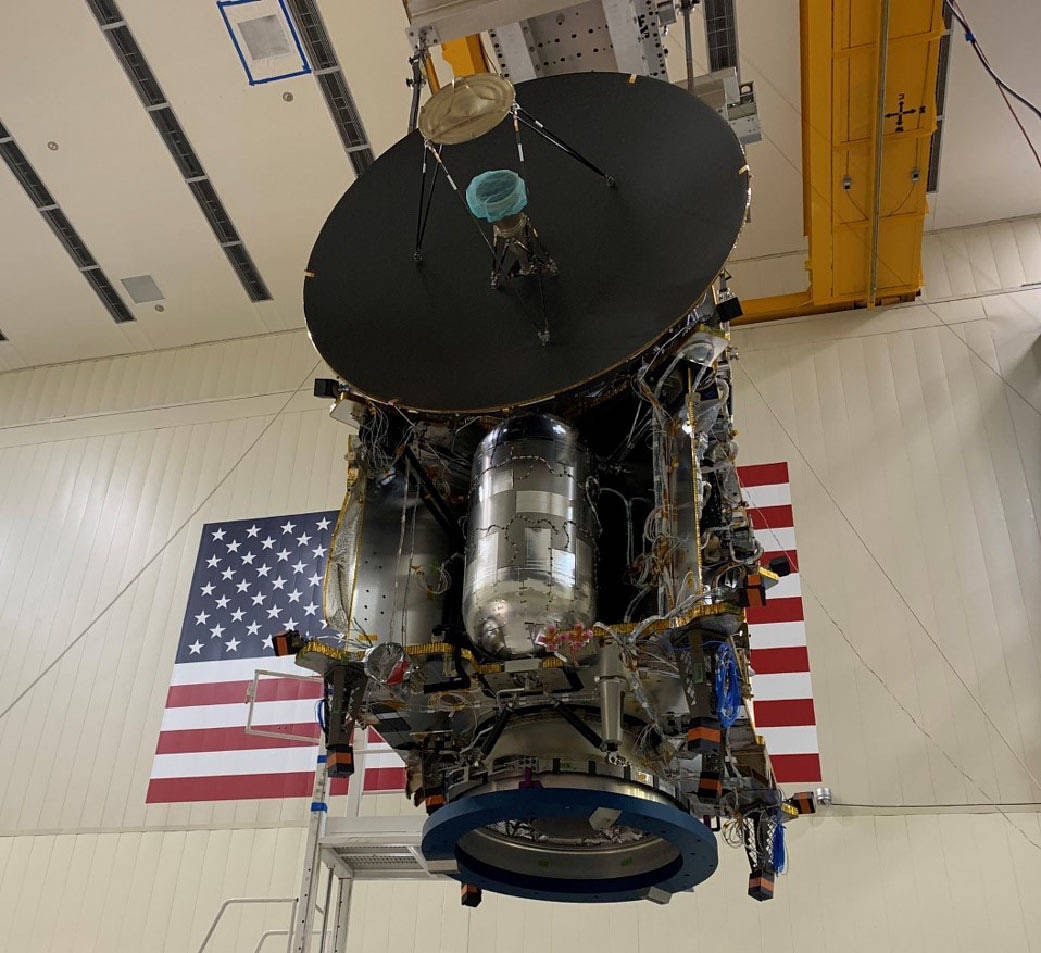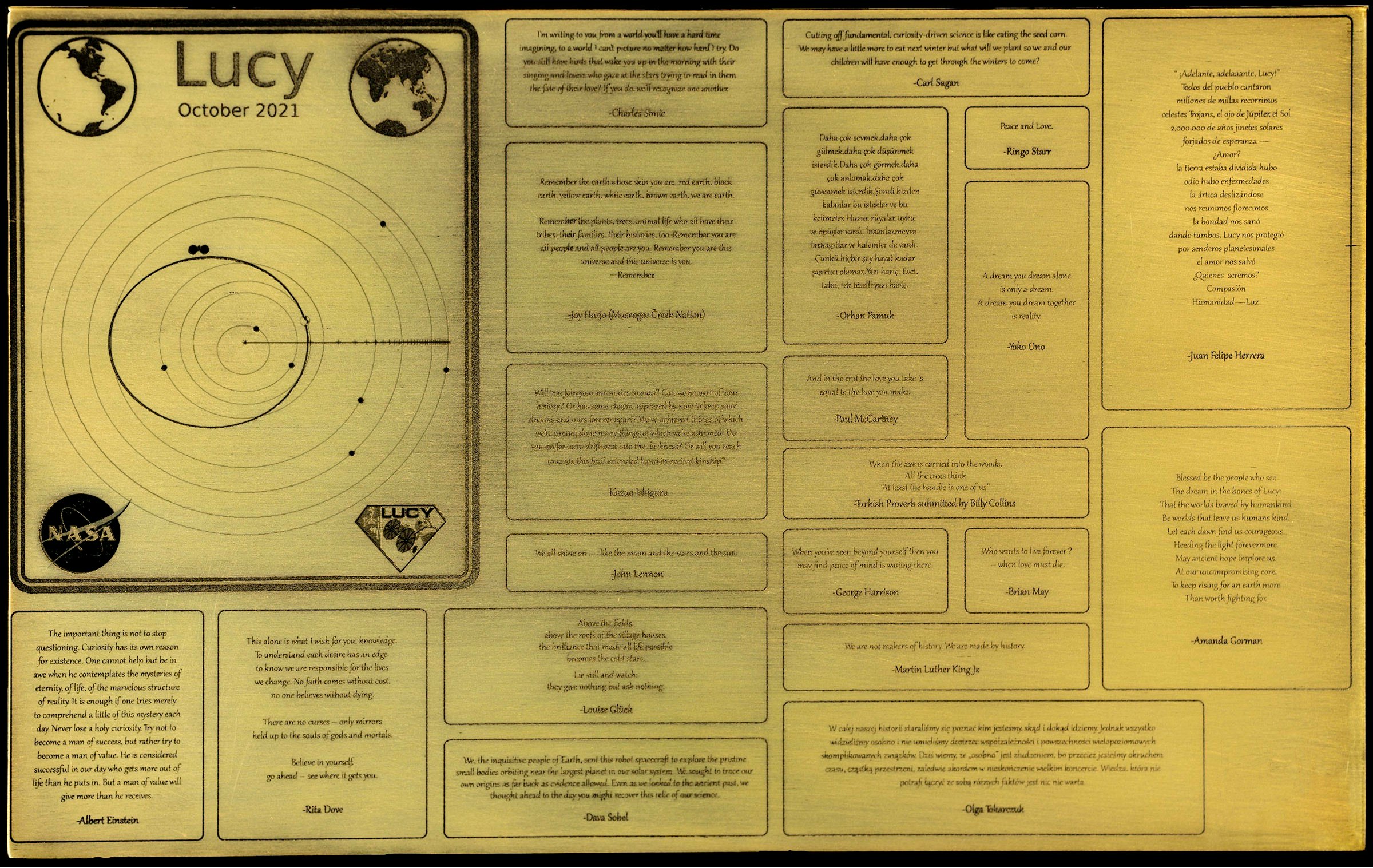
In the absence of a time machine, astronomers turn to asteroids, comets, and other primordial bodies to trace the origins of our Solar System.
NASA launched a spacecraft called Lucy on October 16, 2021. Later this decade, it will be the first to visit a fleet of primordial bodies trailing ahead of and behind Jupiter.
These rocky bodies are known as the Trojan asteroids — two swarms of rocky bodies associated with Jupiter’s orbit around the Sun. One group leads ahead of Jupiter, and the other trails behind. The ancient squad formed from the same material that formed the outer planets of the Solar System more than 4 billion years ago — this is why NASA calls them “time capsules.”
NASA wants a closer look, so it's sending Lucy to explore. And on its way to the Trojans, Lucy will also target two main belt asteroids: the mission will visit the rock 1999 VD57 towards the end of 2021, and Lucy will visit the asteroid Donaldjohanson in 2025.
Next will be the Trojans. These asteroids, gravitationally bound to Jupiter, are believed to contain clues necessary for deciphering and illuminating the history of the Solar System and the origin of life on Earth.
During the revolutionary mission, the spacecraft will:
- Map the surface geology of asteroids and determine their relative age
- Map the color and composition of the asteroids, looking for organic materials
- Determine the mass and density of the asteroids
- Look for accompanying satellites and rings
When did the NASA Lucy mission launch?
Lucy launched on October 16, 2021.
In July 2021, the spacecraft arrived at Kennedy Space Center and was put in a cleanroom to being its final preparations for launch. On September 28, NASA announced most preparations were completed, including:
- Testing mechanical, electrical, and thermal systems
- Testing the launch sequence with mission operators
- Installing the high-gain antenna, which sends back the highest quality data to Earth
- Filling the fuel tanks aboard the craft with hydrazine and liquid oxygen to ensure it has enough to navigate to target asteroids
The next stepwas to pack the spacecraft into its launch vehicle fairing, the top part of the launch vehicle that will protect Lucy in its ascent to space.
Lucy ultimately launched in October 2021 aboard a United Launch Alliance Atlas V rocket from Space Launch Complex 41 at Cape Canaveral Space Force Station in Florida. This launchpad has launched several groundbreaking missions, including the Mars-bound Viking landers, both Voyager missions to the outer Solar System, the New Horizons mission to Pluto, and the Curiosity rover.
An issue occurred shortly after launch: one of Lucy’s two solar arrays, which generates energy from sunlight, didn’t unfurl properly. Engineering models suggested that it reached 98 percent deployed. As of January 2023, NASA has suspended efforts to get the solar array to total deployment, and stated that its status presents an “acceptable level of risk.”
What is the Lucy mission timeline?
The mission is estimated to take 12 years.
In 2025, Lucy’s second stop will be a small Main Belt asteroid called Donaldjohanson. Donald Johanson is an American paleoanthropologist who co-discovered “Lucy,” the name given to Australopithecus afarensis fossils unearthed in Ethiopia in 1974.

Initially, Donaldjohanson was set to be Lucy’s first asteroid target.
But on January 25, NASA announced that Lucy would visit another Main Belt asteroid much sooner than 2025. After searching through half-a-million asteroid candidates, the Lucy team decided that the Main Belt asteroid 1999 VD57 would be near enough Lucy’s predesigned path to study. This rocky rendezvous of the mission’s first asteroid will happen on November 1, 2023.
The Lucy mission needs two gravitational assists from Earth to get to the Trojan asteroids, and a third assist to exit one Trojan swarm and reach the other. Lucy performed its first Earth gravity assist on October 16, 2022, the first anniversary of its launch.
In an FAQ of the mission, NASA states:
“Lucy will be the first spacecraft to travel out to the distance of Jupiter (actually a bit farther) and return to the vicinity of the Earth, for a final gravity assist that will send it back out to its final Trojan encounters.”
The craft will have two encounters with the Trojans, visiting Trojans behind and in front of Jupiter separately, encountering seven Trojans in total on a tour that will take the craft 12 years to complete.
- The 1999 VD57 encounter will happen on November 1, 2023
- The Donaldjohanson encounter will take place in April 2025
- From August 2027 to November 2028, the craft will encounter the “Greek camp” of asteroids that orbit in front of Jupiter, visiting five asteroids of various classifications that will help the mission get a good sampling of these pristine objects
- After swinging back through the inner solar system, the craft will visit the Trojan camp of asteroids, encountering the binary asteroids Patroclus and Menoetius satellite
After this portion of the mission, Lucy will float through space — indefinitely. It will travel between the Trojan asteroids and Earth’s orbit for “at least hundreds of thousands, if not millions of years,” NASA reports.
Why are Trojan asteroids important?
The Trojan asteroids orbit the Sun in two main groups, one that leads ahead of Jupiter and another that follows behind.
The first Trojan asteroid was spotted on February 22, 1906, by German astronomer Max Wolf. Eight months later, another German astronomer, August Kopff, discovered a second asteroid followed by a third discovery in February 1907.
By the year 2017, astronomers had identified more than 4,800 Trojan asteroids accompanying Jupiter in its orbit.
Jupiter’s Trojan asteroids have been stable over the entire age of the Solar System, around 4.5 billion years. As the gas giant planet orbits the Sun, its asteroids either move closer to or further away from Jupiter.
But Jupiter isn’t the only planet with Trojans trailing ahead and behind it: In 1990, an asteroid later named Eureka was discovered around Mars, and eight more have been discovered since then.
Since 2001, 24 Trojan asteroids were discovered around Neptune.

Asteroids formed from the leftover material that formed the bodies of the Solar System.
Trojan asteroids have been gravitationally trapped in Jupiter’s orbit since the very formation of the Solar System, so they serve as a time capsule of the planets and the Sun’s early history.
Jupiter’s Trojan asteroids are also in the outer Solar System. Because of this, they can likely inform scientists of how other planets, including Saturn, Uranus, and Neptune, formed.
Studying asteroids can also help scientists understand the origin of life on Earth. Scientists believe that water and other biological material may have made their way to Earth by way of these rocky bodies millions of years ago.
What are the Lucy mission goals?
NASA first selected Lucy in January 2017 as the first mission to explore the Trojan asteroids.
The mission is named after the fossilized human skeleton that was found in 1974. Although the human skeleton’s scientific name is AL 288-1, she was dubbed as Lucy after the Beatles song, “Lucy in the Sky With Diamonds.” (The addition of Main Belt asteroid 1999 VD57 brings another Beatles Easter egg, with the asteroid tally now a Number 9.)
While the fossil Lucy revolutionized what we know about the origin story of humans, the Lucy mission aims to help us piece together a different origin story: one of the entire Solar System.

The spacecraft is over 46 feet long. Most of its body is made up of massive solar panels, each almost 24 feet, that will power the spacecraft through its journey.
Over its 12-year mission, Lucy will study seven of the mysterious Trojans and two asteroids from the asteroid belt, which is located roughly between the orbits of Jupiter and Mars. The mission aims to determine the mass and density of each asteroid and determine their origin material.
Lucy will study the surface composition, physical properties, and geology of the Trojan asteroids at close range.
Lucy: A message to future humans
Because it is expected the Lucy spacecraft will float on for thousands, if not millions, of years, it contains a plaque carrying a message to future humans.

Etched onto the plaque is a diagram of the positions of planets during October 2021.
The messages on it are a range of proverbs, quotes from poets, musings from scientists, and thoughts from activists. The languages included are English, Spanish, Turkish, and Polish.
Statements made by Paul McCartney, John Lennon, George Harrison, Ringo Starr, and Yoko Ono are all there — fitting for a Lucy mission. Starr puts his message most simply:
“Peace and Love.”







